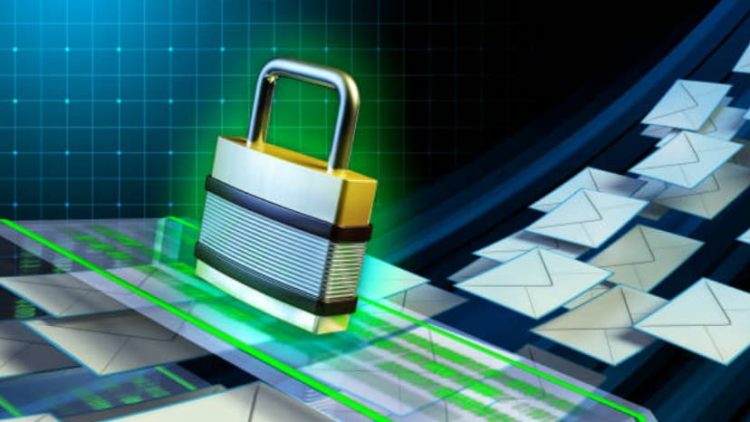Every day, your inbox faces an invisible battle against unsolicited emails. But have you ever wondered if your inbox has protection against malicious emails? Get ready to dive into the world of email filtering! MX Layer is at the forefront of the battle against spam, and we’re here to spill the beans.
Discover the world of email filtering as we demystify its working mechanism, explore the different deployment options available, and reveal the secrets to improving your email filtering process for maximum efficiency. Are you excited to take control of your inbox? Let’s unveil the true power of email filtering!
What is email filtering, and why is it important?
In the fast-paced world of business, email is the lifeblood of communication. Attention, business owners and individuals alike! Your inbox is ground zero for potential cyberattacks. Email filtering is the unsung hero of cybersecurity. It acts like a gatekeeper for your inbox, tirelessly analyzing incoming mail for anything fishy.
A single user error can result in the compromise of sensitive data, with the potential to bring an entire network crashing down. Email filtering effectively combats this threat and serves the dual purpose of sorting and eliminating spam and malicious emails. It is an essential security measure that protects businesses and individuals, saving time and acting as the last line of defense against potential security breaches. Furthermore, email filtering extends beyond inbound messages; it also encompasses outbound filtering, which detects spam-like behavior and prevents spam from leaving the email server’s IP address.
How does email filtering work?

Email filters are like super-smart detectives who inspect incoming emails for signs of spam or phishing. By analyzing content, sender details, and design elements, these filters determine whether an email should be delivered to the inbox or redirected to alternative folders like “Spam” or “Junk.” If the email meets the filter’s criteria for authenticity, it will be delivered to the recipient’s inbox.
Through keyword analysis, sender reputation checks, and phishing detection techniques, users can effectively safeguard their email accounts from unsolicited or malicious content. In the case of phishing emails, which aim to deceive recipients into revealing sensitive information or downloading malware, additional filtering measures come into play. Phishing filters identify suspicious links or attached documents that may contain malicious content. Consequently, by employing these techniques, email filters can effectively distinguish between legitimate messages and spam or phishing attempts, thus helping users manage their email communications more efficiently and securely.
MX Layer’s inbound and outbound email filtering, with robust algorithms and powerful filters, stands as your ultimate guardian against the forces of email chaos.
Why do companies need email filtering, and what advantages does it offer?

According to Getastra’s 2023 Phishing Attack Statistics, around 1.2% of emails sent are malicious, amounting to a staggering 3.4 billion phishing emails daily. The data also projects that over 33 million records will be compromised by ransomware or phishing attacks in 2023. These alarming numbers indicate a high frequency of attacks, with an occurrence every 11 seconds.
Email filtering has become a must-have tool for companies aiming to maintain a secure and efficient communication environment. According to Earthweb, around 94% of cyberattacks are done through emails. Discover the consequences of neglecting email security and its potential impact by checking out our insightful blog post, “What is Email Security? The Essential Guide to Safeguarding Your Digital Gates.”
Email filters are powerful tools that offer a range of advantages:
- Spam Elimination: Email filters efficiently detect and eradicate spam messages, resulting in a remarkable reduction of clutter in users’ inboxes. Not only does it enhance productivity, but it also streamlines the process of locating crucial emails, ultimately saving valuable time.
- Minimizing the Risk of DDoS Attacks: Email filters can help mitigate the risk of Distributed Denial of Service (DDoS) attacks by blocking suspicious or malicious email traffic that may be associated with such attacks. Implementing these measures protects the email server and ensures uninterrupted email communication.
- Minimizing Graymail: Email filters can distinguish between spam and crucial emails. Additionally, they identify graymail, which refers to email that is not necessarily spam but also not important. By minimizing graymail, these filters ensure that users primarily focus on relevant and essential messages.
- Improved Productivity: Email filters enhance productivity by reducing inbox clutter and organizing emails effectively. By prioritizing important emails and separating them from less significant ones, users can efficiently manage their inboxes and allocate their time and attention more effectively.
- Protection from Online Threats: Email filters play a vital role in protecting businesses from various online threats, including phishing attacks and malware. They can identify suspicious emails, block malicious attachments, and prevent users from falling victim to scams or inadvertently downloading malware.
- Bandwidth Savings: Email filters block spam and other unwanted emails from reaching the user’s inbox, resulting in significant bandwidth savings. Bandwidth savings are particularly beneficial for businesses with limited bandwidth resources. It ensures that valuable network capacity is not spent on unwanted email traffic.
- Hard Drive Space Conservation: By blocking spam and other unwanted emails before they reach the user’s mailbox, email filters help save valuable hard drive space. Space conservation is mainly advantageous for individuals and businesses with limited storage capacity, as it allows them to utilize available resources as effectively as possible.
- Reduced Risk of Clicking Malicious Links or Attachments: Email filters by identifying and blocking malicious links or attachments, these filters act as a proactive defense mechanism, safeguarding users from potential security breaches and cyberattacks.
What are common types of email threats?

Email threats are often delivered through deceptive emails to steal sensitive information, propagate malware, extort through ransomware, conduct business email compromise BEC scams, or exfiltrate data. Detecting and understanding these common types of email threats is paramount, as they can inflict significant harm if not promptly identified and mitigated. Get ready to delve into the most prevalent email threats:
- Phishing: Phishing emails trick recipients into revealing sensitive information like passwords, credit card details, or personal data. They often mimic reputable organizations or individuals, creating a sense of urgency or importance. Phishing emails typically contain links to fake websites or forms where victims unknowingly provide confidential information. For instance, an email claiming to be from a bank asks the recipient to click on a link and update their account information. The fake website to which the link directs them steals their data.
- Malware attachments: Emails can sometimes come with attachments disguised as harmless files, such as documents or invoices. These attachments can carry harmful malware such as viruses, ransomware, or spyware. Once the recipient opens these attachments, the malware infects their computer or network, providing attackers with unauthorized access or the ability to encrypt files. For example, imagine an email with an attachment that, when opened, activates a virus, ultimately infecting the recipient’s computer and compromising their system.
- Spear phishing: Spear phishing attacks pose a serious threat as they are crafted to target specific individuals or organizations. Cyber attackers invest time in gathering personal information to create deceptive emails that seem genuine. Spear phishing intends to exploit the recipient’s trust by customizing the email to their unique circumstances. These tailored attacks significantly increase the risk of victims unknowingly divulging sensitive information or falling for fraudulent links. For example, an email might be personalized with the recipient’s name, job title, and company details, all designed to deceive them into disclosing sensitive information or falling victim to a harmful link.
- Business Email Compromise (BEC): In BEC attacks, cybercriminals adopt deceptive tactics, masquerading as high-ranking executives, suppliers, or business partners, and lure unsuspecting victims into harmful actions. They convince individuals to transfer funds, disclose sensitive information, or carry out tasks that benefit the attacker financially. BEC attacks cunningly exploit trust and authority within organizations, leading to dire consequences. Imagine receiving an email that appears to be from your CEO instructing you to transfer a significant sum to a specific account. It’s crucial to stay vigilant and recognize the signs of such fraudulent requests to protect yourself and your organization.
- Email spoofing: Email spoofing occurs when the email header is forged, making it seem like the email comes from a legitimate source or a trusted person. The goal is to trick recipients into believing the email is from a reputable sender, thereby increasing the likelihood of them obeying the attacker’s commands. For example, you might receive an email that appears to be from a well-known company or service, but the email header has been altered to hide the actual source of the email.
- Email bombing: This malicious attack bombards a recipient’s inbox with an overwhelming avalanche of emails. This deluge of emails can severely disrupt communication, hamper productivity, and even lead to email servers crashing, causing additional disturbances. For instance, an individual might experience an overwhelming influx of emails from multiple sources, rendering their email account unusable and significantly impacting their ability to receive genuine messages. Malicious links can direct unsuspecting recipients to websites that host harmful content. These websites may contain malware, deceptive forms aimed at stealing sensitive information, or exploit system vulnerabilities, opening the door to more compromise. For instance, an email might entice the recipient to click on a link, promising a reward or access to critical details. However, this seemingly innocent link leads to a fraudulent website that harvests personal data or deploys malicious software.
- Spam and unwanted emails: While not inherently malicious, spam and unwanted emails can flood inboxes with advertisements, scams, or questionable offers. They consume valuable resources and have the potential to disguise more harmful threats. For instance, an inbox might contain unsolicited emails promoting various products, services, or dubious offers.
What are the different email filtering techniques?
 Let’s dive into email filtering techniques that improve email management and security. By sorting, categorizing, and prioritizing emails, these techniques enhance organization while safeguarding against spam, viruses, and unwanted content. We’ll explore key methods like whitelisting, blacklisting, content filtering, Bayesian filtering, and more to understand their functionality and benefits.
Let’s dive into email filtering techniques that improve email management and security. By sorting, categorizing, and prioritizing emails, these techniques enhance organization while safeguarding against spam, viruses, and unwanted content. We’ll explore key methods like whitelisting, blacklisting, content filtering, Bayesian filtering, and more to understand their functionality and benefits.
Content Filtering
Content filtering is an essential technique for email management. It involves analyzing the content of emails to identify keywords, phrases, or patterns. By examining the content, filters categorize emails into predefined categories or flag them as potential spam. Content filtering ensures effective email organization, routing important messages correctly, and filtering out irrelevant or potentially harmful emails.
Header Analysis
Header analysis is essential for examining email origins and authenticity. Email headers provide valuable details about the sender, recipient, and the email’s journey to the inbox. By scrutinizing the email header, filters can assess the source and validate the email’s legitimacy. Factors like the sender’s IP address, domain reputation, and email routing information are evaluated to determine whether an email is likely to be spam or legitimate.
Whitelisting and Blacklisting
Whitelisting and blacklisting are vital email filtering techniques. Whitelisting involves adding trusted email addresses or domains to receive emails directly in the inbox, bypassing filters. Blacklisting, on the other hand, blocks or filters out specific email addresses or domains to exclude them from the inbox, preventing unwanted or suspicious emails from reaching the recipient.
Sender Policy Framework (SPF)
Sender Policy Framework (SPF) is an email authentication method that validates the sender’s IP address against authorized sending IP addresses for a domain. It combats email spoofing and serves as a filtering technique to detect forged or unauthorized emails. Filters use the SPF record of the sender’s domain to verify the authenticity of an email, enabling appropriate actions based on the SPF result.
Bayesian Filtering
Bayesian filtering is a statistical technique that uses probability and machine learning algorithms to analyze email characteristics. The filter learns to calculate the probability of an email being spam after being trained with known spam and non-spam emails. With continuous processing and user feedback, the Bayesian filter adapts and enhances its accuracy over time. It effectively identifies and filters out spam emails based on learned patterns and probabilities.
Greylisting
Greylisting temporarily rejects emails from unknown senders, leveraging the expectation that legitimate servers will retry delivery. It capitalizes on that spam senders typically don’t retry, while legitimate senders do. This technique effectively filters out a significant amount of spam, ensuring legitimate emails are successfully delivered on retry.
DomainKeys Identified Mail (DKIM)
DomainKeys Identified Mail (DKIM) is an email authentication method that verifies email authenticity using cryptographic signatures. Filters use DKIM signatures to validate email integrity and filter out emails with invalid or missing signatures. DKIM enhances the security and trustworthiness of email filtering by ensuring emails remain untampered during transmission.
Collaborative Filtering
Collaborative filtering utilizes a shared spam database from multiple users to identify and filter out spam emails. User-contributed spam reports enhance collective knowledge, continuously improving filtering accuracy.
Inbound and Outbound Email Filtering: What You Need to Know

Organizations often deploy comprehensive email filtering solutions combining inbound and outbound filtering capabilities to enhance email security. Inbound and outbound email filtering are integral components of modern email security systems.
Inbound email filtering focuses on scanning incoming messages from the Internet to protect users. Its purpose is to identify and mitigate potential risks associated with these messages. Advanced algorithms detect and block unsolicited emails (spam), which can clutter inboxes and carry malicious content. Inbound filters also identify and isolate emails containing malware or viruses, safeguarding users from downloading harmful software. Additionally, inbound filtering helps identify emails with suspicious links that may lead to phishing attacks or other security breaches.
On the other hand, outbound email filtering scans emails sent by local users before they reach recipients on the Internet. Its goal is to prevent the transmission of potentially harmful or unauthorized content. This approach ensures that the sender’s reputation remains intact and that email communication security is maintained.
Outbound filters analyze email content and attachments to ensure compliance with security policies and prevent the accidental leakage of sensitive information. For instance, they can block outbound emails containing confidential data, such as credit card details or intellectual property, to prevent data breaches and protect privacy. Furthermore, outbound filtering systems identify and stop the transmission of emails marked as spam by other organizations’ filters.
What are the different types of deployment for email filtering?
Multiple deployment methods exist, each offering distinct advantages and considerations. It’s essential for organizations to carefully evaluate their requirements and consider factors such as scalability, regulatory compliance, data privacy, and management efforts when choosing an email filtering deployment. The right deployment type should align with the organization’s needs, resources, and long-term goals to provide effective and efficient email protection.
Here, we will delve into the diverse types of email filtering deployment, unraveling their benefits and factors to consider, thus enabling organizations to make informed decisions regarding their email security strategies.
Cloud-Based Deployment
Cloud-based email filtering utilizes third-party providers for analysis and filtering. Incoming and outgoing email traffic is redirected to the cloud service for techniques like spam detection, malware scanning, content filtering, and sender reputation analysis. Benefits include easy setup, scalability, and offloading of infrastructure management. It provides continuous updates and advanced threat intelligence. However, organizations must trust the cloud provider with email data and ensure compliance with regulations.
On-Premises Deployment
On the other hand, on-premises email filtering is necessary for regulatory compliance in certain industries and preferred by those who want to keep their data internal. This model requires provisioning a physical appliance with filtering software installed. Appliance-based filtering keeps data internal and under the organization’s IT staff’s control. However, it demands time-consuming maintenance, management, and updates of the infrastructure by internal IT staff.
Hybrid Deployment
A hybrid deployment is a suitable alternative for organizations with a mix of on-premises and cloud mailboxes. Microsoft’s Defender for Office 365 enables configuring mail routing and protection in a hybrid setup. Hybrid deployment allows leveraging both on-premises and cloud-based email filtering solutions, like Exchange Online Protection, for comprehensive email security.
Hybrid deployment combines on-premises and cloud-based filtering, offering flexibility to customize the approach based on specific requirements, compliance needs, or infrastructure limitations. Organizations can deploy particular email security components on-premises while using cloud-based filtering for advanced threat detection, email continuity, or other functionalities.
Managed Service Provider (MSP) Deployment
Some organizations outsource their email filtering requirements to Managed Service Providers (MSPs). MSPs specialize in delivering extensive email security services, encompassing filtering, threat detection, encryption, archiving, and regulatory compliance management.
By deploying an MSP, organizations can entrust the maintenance and updates of their email security infrastructure to a reliable third party. This strategy proves more advantageous for smaller organizations or those with limited IT resources. Nonetheless, organizations must exercise caution and select a trustworthy MSP to ensure the secure handling of their email communications.
Expert Tips for Effective Email Filtering

Fellow inbox warriors! Raise your virtual hand if you’ve ever felt lost in the Bermuda Triangle of emails. How can you improve your email filtering? MX Layer is here to advise you on effective email filtering. By implementing these time-tested strategies, you’ll regain inbox control and supercharge your email productivity.
- Set up filters: Create rules to flag or move important emails to designated folders. You can prioritize specific senders or keywords to ensure they appear prominently in your inbox.
- Use sender filters: Identify valuable or unimportant senders and sort incoming messages from them into appropriate folders. The sender filter helps you focus on high-priority emails and declutter your inbox.
- Utilize keyword filters: Identify spam-related keywords and create filters to divert or delete messages containing those keywords. Be careful to avoid filtering out legitimate emails inadvertently.
- Whitelist trusted senders: Add trusted email addresses or domains to an approved contacts list. Creating a whitelist ensures their emails bypass spam filters and reach your inbox directly. Regularly check your spam folder for legitimate emails and whitelist them if necessary.
- Blacklist or block unwanted senders: Create filters to send spam or irrelevant emails from specific senders to your spam folder or block them altogether. Creating a blacklist reduces inbox clutter and minimizes distractions.
- Enable advanced spam filters: Customize and enable the built-in spam filters provided by your email service. Configure them to catch and remove unwanted emails effectively.
- Train your spam filters: Take advantage of features that allow you to mark certain emails as spam or not. Consistently provide feedback to help improve the accuracy of your spam filters over time.
- Regularly review and update filters: Review your filters frequently, and make necessary adjustments. New senders may emerge, or your preferences may change, so adapt your rules accordingly.
- Utilize unsubscribe options: Unsubscribe from newsletters or marketing emails that are no longer useful. Doing this helps to reduce the volume of incoming emails and prevents inbox clutter.
- Be cautious with public email exposure: Be mindful of where you share your email address publicly to minimize the chances of receiving unsolicited or spam emails. Exercise caution to protect your inbox from unnecessary messages.
Discover MX Layer’s Email Filtering Service for Ultimate Protection
 Cybercriminals constantly devise new tactics to exploit vulnerabilities and compromise sensitive information. MX Layer’s Email Filtering Service provides a comprehensive and reliable solution for ultimate protection against email threats, empowering your organization to focus on its core operations without compromising security.
Cybercriminals constantly devise new tactics to exploit vulnerabilities and compromise sensitive information. MX Layer’s Email Filtering Service provides a comprehensive and reliable solution for ultimate protection against email threats, empowering your organization to focus on its core operations without compromising security.
Let’s delve into the key features that make MX Layer the go-to solution for safeguarding your email communications:
MX Layer Comprehensive Threat Protection
MX Layer‘s Email Filtering Service offers comprehensive threat protection. It effectively blocks spam, viruses, phishing attempts, and malware attacks, ensuring a secure inbox. Real-time monitoring detects and responds to the latest spam and malware outbreaks, protecting you against evolving threats.
Malicious attachments and URLs are neutralized through detailed scanning, safeguarding your organization from breaches. Advanced antivirus and antispam protection stay up-to-date on current threats using multiple third-party vendor-acquired signatures. Lastly, zero-hour attack protection detects and safeguards against new, unknown threats, providing the ultimate defense against zero-day attacks.
Seamless Email Operations
MX Layer ensures seamless email operations with a resilient filtering infrastructure. Even during network outages or server failures, your email communication remains uninterrupted, minimizing disruptions and maintaining smooth operations. Automatic data backup guarantees the safety of critical emails and attachments, providing constant security for valuable information.
Easy recovery options are available in cases of accidental deletion or data loss to quickly recover vital data without hassle. The log monitoring functionality tracks and analyzes log data, offering valuable insights into your email infrastructure’s activity and traffic. This optimization helps improve performance and facilitates informed decision-making.
Customized Control and Compliance
MX Layer’s email filtering service provides customized control and compliance features tailored to your organization’s needs. Advanced content filtering allows you to create personalized filters for inbound and outbound emails, ensuring exceptional control and protection against spam, phishing attempts, and malware.
The data leak prevention feature identifies and stops the transmission of sensitive data through outbound emails, preserving the confidentiality and security of your company’s information. Content compliance scanning enforces organizational policies and industry regulations, blocking inappropriate or sensitive content from being sent. MX Layer actively manages SPF, DKIM, and DMARC records to enhance email authentication and protect against fraudulent emails.
Protect User Accounts and Outbound Communication
MX Layer prioritizes the security of user accounts and outbound communication. The account protection feature blocks suspicious or unauthorized activities associated with user accounts, preventing compromised accounts from sending outbound emails. Outbound filtering safeguards your organization’s reputation and prevents unauthorized access to sensitive information. Abuse account blocking identifies and blocks suspicious or unauthorized activity from compromised or abused user accounts.
MX Layer’s outbound email filtering protects your enterprise’s networks from outbound spam, viruses, and malware, ensuring uninterrupted email communication and reducing the risk of network exploitation. DKIM signing enhances the authenticity and integrity of outgoing emails. Lastly, outbound rate limit management allows you to optimize email delivery and prevent abuse by setting controls.






